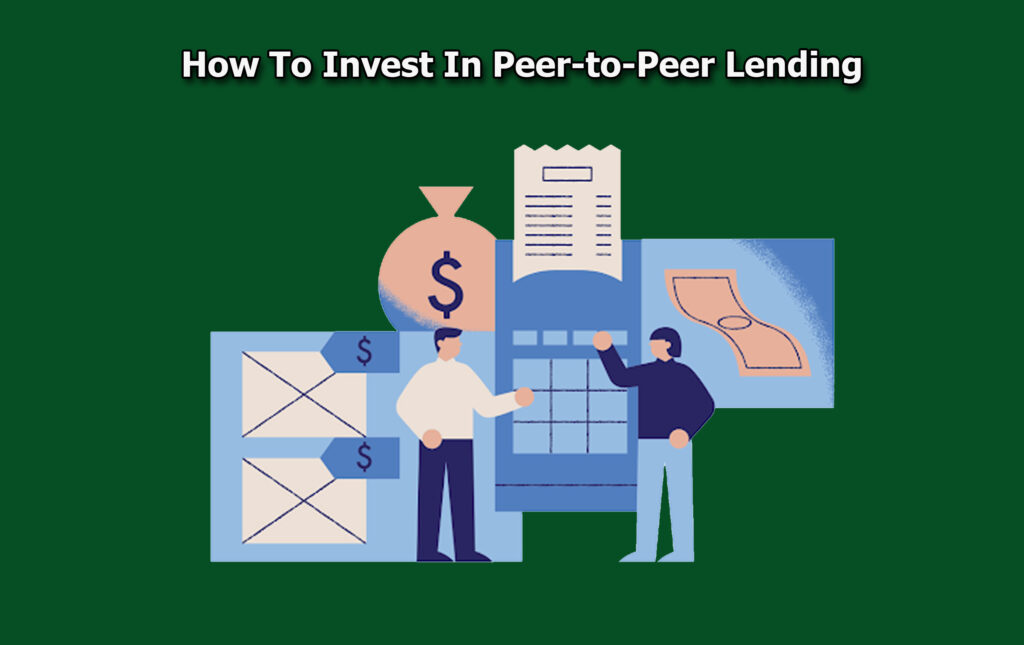How To Invest In Peer-to-Peer Lending – Looking for alternative investment options beyond traditional stocks and bonds? Peer-to-peer lending offers a unique opportunity to diversify your portfolio and potentially earn attractive returns.

By lending directly to individuals or small businesses, you can tap into a growing market with promising yields.
As with any investment, it’s essential to understand the process, risks, and potential rewards.
In this article, we’ll guide you through the ins and outs of peer-to-peer lending, helping you decide if it’s the right fit for your investment strategy.
How Peer-to-Peer Lending Investment Works
Peer-to-peer (P2P) lending allows you to lend money directly to people who need a loan, using online platforms like Prosper and Upstart. These platforms act as a middleman , they handle everything, including:
- Finding trustworthy borrowers
- Checking their identity
- Sending them the loan money
- Collecting the payments later
Sometimes, the platform or a partner bank gives out the loan first and then sells it to investors afterward. As an investor, you usually don’t talk to the borrower directly.
Both sides stay private. If the borrower pays on time, you’ll get regular payments back.
Should You Invest In Peer-to-Peer Lending?
Whether or not to invest in P2P lending depends on your personal goals and how much risk you are willing to take. Let’s look at the good and bad sides.
Benefits of P2P Lending
Chance To Earn Good Returns
P2P lending might offer better returns than savings accounts or bonds. For example, studies have shown that LendingClub loans earned investors returns between 4.7% and 10.3% between 2015 and 2018. Prosper also reports average returns of about 5.7%.
Easy To Get Started
You don’t need a lot of money to begin. Some platforms allow you to start investing with as little as $5 or $25. However, some might ask for more.
Helps Diversify Your Investments
Adding peer-to-peer loans to your investment mix can spread out your risk. It gives you something different from just stocks, bonds, or mutual funds.
Risks of P2P Lending
Borrowers May Not Repay
Even though platforms check borrowers carefully, some still fail to pay back their loans. If that happens, you might lose some or all of your money.
Fees Can Eat Into Your Profits
Most P2P platforms charge service fees. For example, you might lose about 1% of each borrower payment as a fee.
Your Money Gets Locked Up
After you invest in a loan, you must wait for the borrower to finish paying it back before you can access your money again. If you suddenly need cash, this could be a problem.
How To Start Investing In Peer-to-Peer Lending
If you want to invest in P2P loans, here’s what you need to do:
Pick A Platform
Choose a platform based on what you value. For example, Kiva focuses on helping underserved communities, while other platforms may offer different loan types.
Also, know that some platforms are only for accredited investors. To qualify as an accredited investor, you generally need to meet income or net worth requirements , like earning $200,000+ per year or having $1 million in assets (excluding your home).
When comparing platforms, check their fees, requirements, and minimum investment amounts.
Open An Account
Sign up on the platform. Then, you can either pick loans to invest in one by one or let the platform automatically match you with borrowers based on your preferences.
Monitor Your Investments
Keep an eye on your loans to make sure borrowers are making payments. If you have a financial advisor, keep them in the loop so they can help you manage your overall investment strategy.
Depending on how your loans perform, you might want to adjust your investments to balance risk and reward.
Frequently Asked Questions
Is Peer-To-Peer Lending Safe?
P2P lending is riskier than keeping money in a savings account or buying a certificate of deposit (CD). Although you might earn higher returns, you can lose money if borrowers don’t repay.
Is Investing In Peer-To-Peer Loans Worth It?
It can be, but it’s not guaranteed. High returns come with higher risks, including possible losses and platform fees that might cut into your earnings.
Do Borrowers Repay P2P Loans Like Regular Loans?
Yes. If you borrow money through a P2P platform, you usually pay an upfront fee and then make monthly payments with interest until the loan is paid off.



